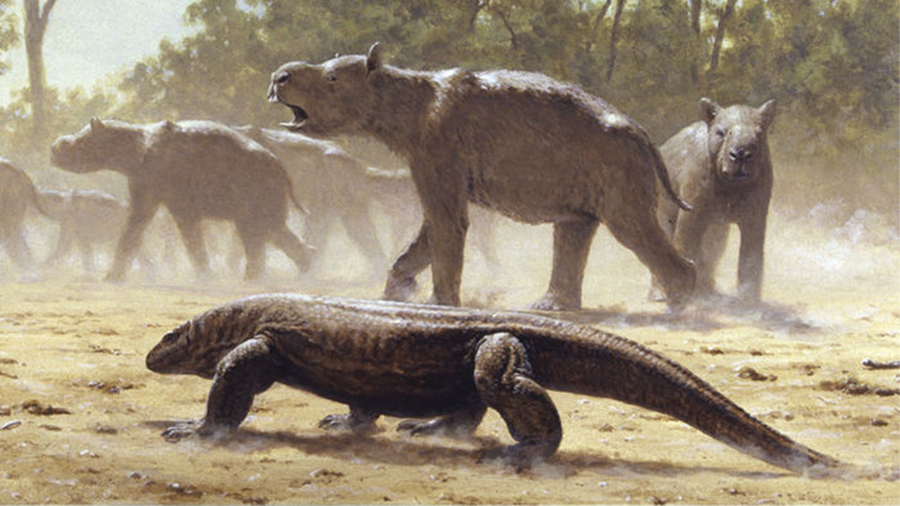Giant Reptiles Once Ruled Australia. Their Loss Sparked An Ecological Disaster

Saber-toothed cats, short-faced bears, and other ferocious mammals were the top predators of the ice age across most of the world. But not in Australia. Here, reptiles ruled: land-living crocs, monstrous snakes, and enormous relatives of the Komodo dragon, according to a study presented yesterday at the annual meeting of the Society of Vertebrate Paleontology here. The disappearance of these animals, the researchers argue, made room for mammalian predators to take over and set the stage for a massive extinction crisis that accelerated when Europeans arrived 200 years ago.
“Between the expansion of agriculture in Australia, which changed the landscape, and the predators that we brought in, there was no way for native animals to escape,” says Kenny Travouillon, a paleontologist at the Western Australian Museum in Perth who was not involved in the study.
The new picture emerged after Gilbert Price, a paleontologist at the University of Queensland in St. Lucia, Australia, and colleagues scoured the scientific literature on new fossil discoveries from the past 15 years or so. Added together, the finds showed that Australia had a much greater diversity of ice age reptiles than is widely accepted. These include 200-kilogram relatives of Komodo dragons, three to four times the size of those around today, and long-legged, land-living crocodiles. Price and others have also made new unpublished fossil discoveries that bolster the idea of a continent dominated by reptilian predators for much of the past 25 million years, up until at least 100,000 years ago.
“We think of the age of the dinosaurs as when reptiles like dinosaurs and crocs were dominant,” says Larisa DeSantis, a paleoecologist at Vanderbilt University in Nashville who was not involved with the research. “So, it’s exciting to think Australia was dominated by reptilian predators in its recent history.”
Travouillon says the idea that Australia was once dominated by reptiles was first proposed in the 1990s. But it fell out of favor as some research instead focused on native mammal predators, such as the marsupial lion, Thylacoleo. However, a better understanding of Australia’s fossil record is confirming “that originally the land predators were reptiles,” he says.
Most of these large reptiles, and the only large native mammal carnivores, had finally vanished by about 40,000 years ago along with Australia’s other megafauna, possibly because of changing climate. That left only small mammalian predators like the dog-size Tasmanian tiger and the even smaller Tasmanian devil to step into the role of apex predators across the continent. Price suggests these left ecosystems out of kilter.
Things got worse about 4000 years ago when people introduced the dingo, a placental mammal from Asia that was a more efficient hunter than the Tasmanian tiger or devil and quickly outcompeted them. But it was the European introduction of the cat and the red fox in the past 200 years that has caused the most damage. These animals devastated small marsupials, which had evolved alongside the reptiles but were not used to dealing with more intelligent and effective placental mammal predators.
“Our research demonstrates that it’s not normal for our continent to be dominated by placental mammals as top predators,” Price says, which have “reigned unchecked in the absence of the now-extinct ice age giants.”
The dingo was likely responsible for the loss of the Tasmanian devil and Tasmanian tiger. But cats and foxes have been implicated in the loss of 28 to 30 species and subspecies of Australian mammals in the past 200 years. “That represents 50% of global mammal extinctions over that time,” he says, “which is an absolute ecological disaster.”
And it all began with the disappearance of the ice age reptiles, Price argues. “We’re still facing the ecological fallout of their losses.”
Source: www.sciencemag.org








